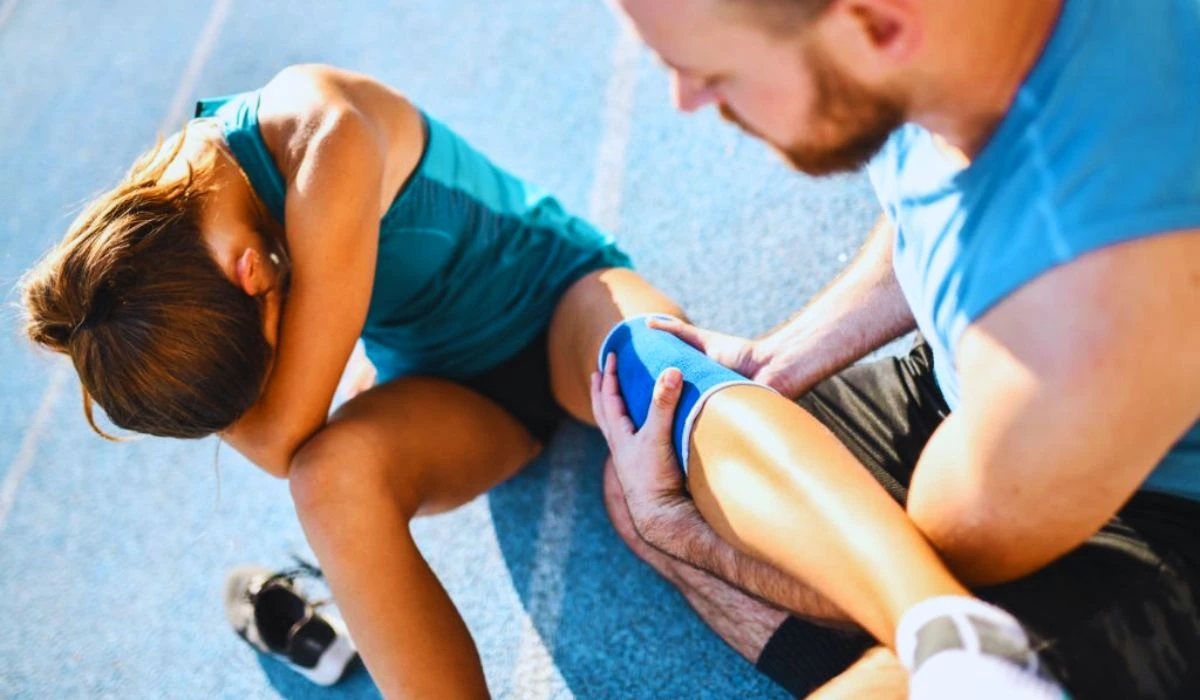Any world-class athlete who is relentlessly pushing limits to strive for greatness will have the risk of overuse injuries. Rehabilitation will be a great help for athletes who are on a path to glory in their careers. Sports rehabilitation is an amalgamation of science, technology, and commitment.
It aids athletes recovering from overuse injuries who have soared too close to the sun. Let’s embark on a journey through the exhilarating world of sports and the advantages of rehabilitation.
What Are Overuse Injuries In Sports?

Overuse injuries are common in sports. An athlete may develop overuse injuries through repetitive micro-trauma on the muscles, ligaments, nerves, and tendons. Unlike single injuries, physicians may face challenges in dealing with the treatment, assessment, and diagnosis of overuse injuries. A few reasons that increase the risk of overuse injuries include:
- Playing only one sport in a year
- Heavy training
- Past unhealed injuries and healed injuries
- Poor ways of doing exercises
- Age
- Insufficient recovery time
- Psychological factors
- Wearing the wrong type of shoes
Apart from all these external factors, health conditions such as muscle weakness, muscle imbalance, and flexibility issues can also contribute to the development of overuse injuries. Athletes may develop the following common types of overuse injuries in their career:
- Stress fracture
- Tendinopathies
- Nerve entrapment syndrome
- Focal tissue thickening
- Iliotibial band syndrome
- Plantar fasciitis
Rehabilitation can improve overuse injuries in athletes. Let’s discover more about rehabilitation for overuse injuries.
Also Check: Injury Prevention Strategies For High-Impact Sports: Staying Injury-Free
Striking A Balance: Navigating Overuse Injuries And Sport Rehabilitation
The core of rehabilitation for overuse injuries is giving the athlete enough time to heal and recover mentally and psychologically. Repetitive micro-traumas can cause severe pain over time. Complete recovery does not always require total bed rest; it is not always advisable for people with overuse injuries. Planning rehabilitation for overuse injuries includes a lot of steps. They include,
💠 Diagnosis
Athletes with overuse injuries may experience pain, swelling, and other symptoms. The first part of rehabilitation is always the diagnosis of the type of overuse injury. A careful assessment of the site of pain, the nature of the injury, and the history of the injury is required for a proper diagnosis of the injury.
Your physician will also evaluate potential risk factors involved in your training. A physical examination is also needed in this step. Medical imaging like an X-ray, CT, or MRI may also be required to determine the nature of the injury.
💠 Alleviating Inflammation And Pain
Overuse injuries can lead to many discomforts; reducing pain and inflammation is another aspect of overuse rehabilitation. The initial treatment may start with R.I.C.E. (rest, ice, compression, and elevation).
Medication, surgery, physical therapy, or non-surgical interventions like shock wave therapy and platelet-rich plasma (PRP) injections are the other treatment options to heal overuse injuries. Complications related to treatments are usually rare; however, in rare cases, patients may develop some issues, such as:
- Drug allergies
- Some steroid injections and medications may lead to diabetes.
- In rare cases, surgeries and injections can result in bleeding and infections.
- Improper healing may result in chronic pain.
- Depression and anxiety
- Insomnia
Further treatment is needed if the athlete develops any kind of complications during the treatment period.
Healing is crucial for overuse injuries. Once you recover from pain and inflammation, your doctor suggests physical therapy to restore the normal functioning of the injured area. Physical therapy can improve your overall health and vitality. It can also restore mental and physical health.
Undergoing physical therapy can aid in reducing the risk of future injuries and complications. Educating the athletes regarding the injury, advising them to use proper equipment while training, and developing a customized home exercise routine are also significant in the process of overcoming overuse injuries.
💠 Prevention Of Overuse Injuries In Athletes
Prevention of overuse injuries in athletes needs a personalized approach. Prevention strategies can vary from one athlete to another based on the nature and type of the injury. The athlete’s area of sport should also be considered while developing a prevention strategy. However, some of the general ways to reduce the risk of overuse injuries in athletes are:
- Taking intervals between sports seasons
- Undergoing physical therapy before the start of the season
- Use of proper types of equipment and tools
- Undergoing pre-season and in-season preventive programs
- Avoiding excessive training
Read More: The Role Of Physical Therapy In Sports Injury Recovery
Conclusion
Overuse injuries are common among athletes. Unlike single-time injuries, overtime injuries are the result of repetitive stress injuries. An athlete may experience chronic pain only after the injury gets worse. Diagnosing overuse injuries sooner is better.
A physician with experience in sports medicine can effectively treat overuse injuries in athletes. R.I.C.E., medications, injections, surgeries, shock wave therapy, PRP, and physical therapy offer excellent results. Giving enough time to heal the injury is crucial in overuse injury rehabilitation.